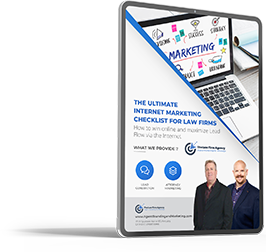Video marketing has become a crucial tool for insurance agents, much like conversational marketing, interactive content, voice SEO, email marketing, and SMS marketing. It’s one of the top digital marketing trends today, driven by the fact that 75% of people watch short-form videos on their mobile devices, and 81% of sales are directly influenced by video marketing.
This guide will walk you through how insurance agents can effectively use short-form videos to market their services. By the end, you’ll be equipped to create compelling videos and seamlessly integrate them into your marketing strategy.
- Key Takeaways
- Understanding Short-Form Videos
- Crafting Compelling Video Scripts
- Measuring Success and ROI
- Case Studies and Success Stories
- Conclusion
- FAQs (Frequently Asked Questions)
- What is the benefit of using short-form videos in marketing for insurance agents?
- How do I get started with video marketing as an insurance agent?
- What platforms should I use to share my short-form videos?
- Do I need professional equipment to create high-quality videos?
- How can I ensure my videos reach a wide audience?
- What metrics should I track to measure the success of my video marketing?
- How often should I publish videos to be effective?
- Can I produce videos in-house, or should I hire professionals?
- What should I do if my video marketing campaign isn’t performing well?
- Are there any success stories of insurance agents using video marketing effectively?
Key Takeaways
- Importance of Video Marketing: Video marketing, particularly short-form videos, is a critical tool for insurance agents, helping to build trust, increase engagement, improve SEO, and drive sales.
- Strategic Planning: Effective video marketing starts with setting clear goals, understanding your target audience, and developing a content strategy that aligns with your marketing objectives.
- Crafting and Producing Videos: Creating compelling video scripts that are clear, concise, and tailored to each platform is essential. High-quality production, whether DIY or professional, involves good equipment and basic videography skills.
- Platform Optimization: Videos should be optimized for specific platforms like TikTok, Instagram Reels, and YouTube Shorts, with cross-platform strategies to maximize reach and engagement.
- Promotion and Engagement: Leveraging both organic and paid methods on social media, integrating videos into email marketing, and using your website and blog for video promotion are crucial for effective marketing.
- Measuring Success: Regularly track key performance indicators (KPIs) such as views, engagement, and conversion rates using analytics tools to refine your video marketing strategy.
- Continuous Improvement: Use data insights to continuously improve your video marketing efforts, adapting to new trends and platform updates.
- Case Study: Jeff Rose, a Certified Financial Planner, successfully used video marketing to build a strong online presence and generate leads, demonstrating the effectiveness of this strategy in the insurance industry.
Understanding Short-Form Videos
For a video marketing strategy to be effective, creating videos of the right length and format is crucial. Equally important is promoting these videos on the right platforms, such as TikTok, YouTube, and Instagram.
Video marketing offers numerous benefits to insurance agents, including building trust with the target audience, increasing engagement, improving SEO and conversion rates, and outpacing competitors.
Planning Your Video Content
- Setting Clear Goals
- Successful video marketing starts with setting clear objectives. Whether your goal is to increase brand awareness, generate more leads, or educate your clients, your video content should align with these goals.
- Audience Analysis
- Identifying your target audience is the next critical step. Understand where your potential clients live, their interests, and what content will resonate with them.
- Content Strategy Development
- Your video content should be relevant to the insurance industry. Incorporating policy explanations, customer testimonials, and industry tips can enhance the value of your videos. Consistency is key, so develop a content calendar and stick to it.
Crafting Compelling Video Scripts
- Key Elements of a Successful Video Script
- Your videos need to be attention-grabbing, clear, and concise, with a strong call to action. The message should resonate with your target audience.
- Tips for Scriptwriting
- Keep your language simple and easy to understand. Utilize storytelling techniques, and tailor your scripts to the specifications of the platform where you’ll share them.
Production Techniques for High-Quality Videos
- Essential Equipment
- The quality of your videos largely depends on the equipment you use. Invest in good cameras or smartphones, as well as lighting and sound equipment.
- Basic Videography Skills
- Understanding framing, composition, lighting, and sound management is essential for creating high-quality videos. Post-production editing is also crucial for polishing your videos and adding effects.
- DIY vs. Professional Production
- While professional video production can deliver high-quality results, it can also be expensive. If your budget is limited, consider learning how to produce videos in-house.
Optimizing Videos for Different Platforms
- Platform-Specific Best Practices
- TikTok: Leverage trends, challenges, and hashtags to boost brand awareness and drive sales.
- Instagram Reels: Focus on aesthetics, add captions, and music to make your videos more engaging.
- YouTube Shorts: Use thumbnails to grab attention and include keywords in your video descriptions and tags for better visibility.
- Cross-Platform Strategies
- After publishing your video, share it across different platforms to maximize its reach. Consistency in messaging and branding is crucial.
Promoting Your Videos
- Leveraging Social Media
- Both organic and paid methods can be used to promote your videos on social media. Organic methods may take time to build traction but can become a steady source of traffic. Paid methods offer faster results but cease when you stop paying. Always engage with your audience by responding to comments and messages promptly.
- Email Marketing
- Integrate videos into your email marketing campaigns and track their performance to gauge effectiveness.
- Website and Blog Integration
- Feature your videos on your website’s main page or within blog posts to enhance engagement and drive traffic.
Measuring Success and ROI
- Key Performance Indicators (KPIs)
- Track views, likes, shares, comments, conversion rates, lead generation, and audience retention to evaluate your video’s performance.
- Analytics Tools
- Utilize platform-specific analytics tools like TikTok Insights, Instagram Insights, and YouTube Analytics to gain deeper insights into your audience and the effectiveness of your campaigns.
- Continuous Improvement
- Use the data gathered from analytics tools to continuously refine your video marketing strategy, taking into account new trends and platform updates.
Case Studies and Success Stories
Jeff Rose, a Certified Financial Planner (CFP), effectively used video marketing to promote his services. By creating a YouTube channel and consistently publishing videos on topics like life insurance and financial planning, he established a strong online presence, generated leads, and positioned himself as a trusted authority in the insurance industry.
Conclusion
Video marketing is a powerful tool for growing an insurance business. However, success hinges on creating high-quality videos and promoting them effectively. Use the tips provided in this guide to start your video marketing journey.
If you’re interested in learning how we can help you grow your insurance business through video marketing, contact us today for an initial consultation!
FAQs (Frequently Asked Questions)
What is the benefit of using short-form videos in marketing for insurance agents?
Short-form videos help insurance agents build trust with their audience, increase engagement, improve search engine optimization (SEO), boost conversion rates, and effectively differentiate themselves from competitors.
How do I get started with video marketing as an insurance agent?
Begin by setting clear goals for your video marketing efforts. Understand your target audience, develop a content strategy, and create a content calendar to ensure consistency. Start by creating simple videos and gradually improve your production quality as you gain experience.
Do I need professional equipment to create high-quality videos?
While professional equipment can enhance video quality, you can still create effective videos using smartphones and basic lighting and sound equipment. The key is to focus on good framing, composition, and editing to produce engaging content.
How can I ensure my videos reach a wide audience?
Promote your videos across multiple platforms and use both organic and paid methods to boost visibility. Engage with your audience by responding to comments and direct messages, and consider integrating videos into your email marketing campaigns and website.
What metrics should I track to measure the success of my video marketing?
Track key performance indicators (KPIs) such as views, likes, shares, comments, conversion rates, lead generation, and audience retention. Use analytics tools provided by each platform to gain insights into your video performance.
How often should I publish videos to be effective?
Consistency is crucial in video marketing. Create a content calendar and aim to publish videos regularly, whether that’s weekly, bi-weekly, or monthly, depending on your resources and audience engagement.
Can I produce videos in-house, or should I hire professionals?
You can produce videos in-house if you have a limited budget. However, if you require higher production quality and have the resources, hiring professionals may be beneficial. Starting with DIY videos allows you to gain experience and understanding before potentially scaling up.
What should I do if my video marketing campaign isn’t performing well?
Analyze your KPIs to identify areas of improvement. You may need to adjust your content strategy, improve the quality of your videos, or explore different promotional methods. Continuous improvement based on data insights is key to a successful video marketing campaign.
Are there any success stories of insurance agents using video marketing effectively?
Yes, Jeff Rose, a Certified Financial Planner (CFP), successfully used video marketing by creating a YouTube channel where he shares videos on life insurance and financial planning. His efforts helped him establish a strong online presence, generate leads, and build credibility as an authority in the insurance industry.
This article is a collaboration between Carl Willis and OpenAI’s ChatGPT. Created on August 16, 2024, it combines AI-generated draft material with Willis’ expert revision and oversight, ensuring accuracy and relevance while addressing any AI limitations.






